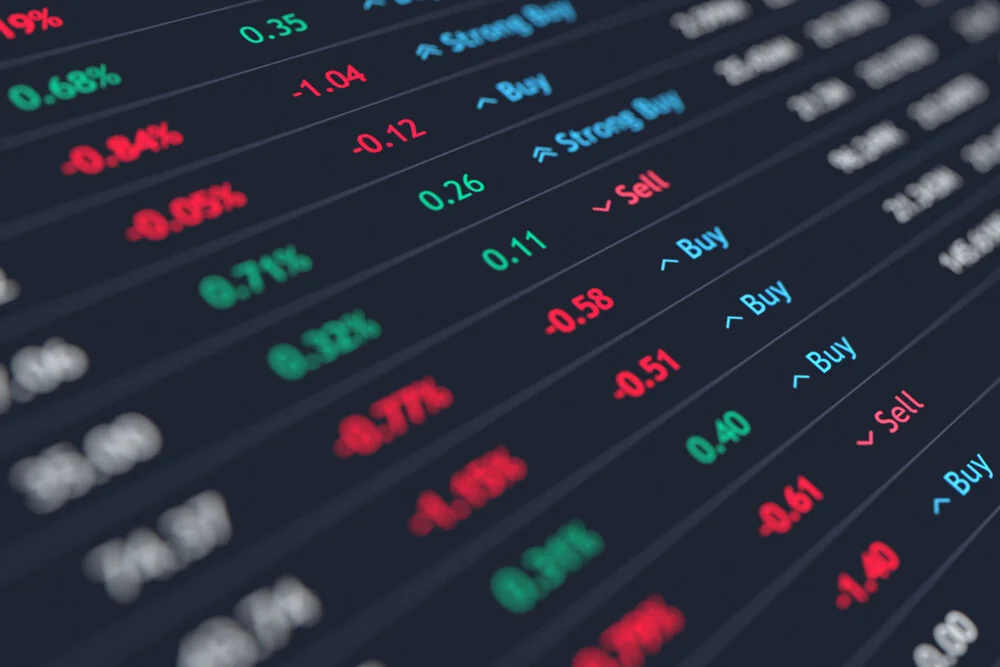A Beginner's Guide to algorithmic Cryptocurrency Trading
Sat Apr 29 2023
Algorithmic cryptocurrency trading can be a highly profitable venture if you have a robust trading strategy in place. Here are some of the most popular algorithmic trading styles and their implications. Read more.

Algorithmic cryptocurrency trading can be a highly profitable venture if you have a robust trading strategy in place. A trading strategy is an extensive plan that guides all your trading activities, helping you to mitigate financial risk. In this guide, we’ll discuss some of the most common algorithmic cryptocurrency trading strategies, including technical analysis and fundamental analysis, and the difference between active and passive investment strategies.
What is an Algorithmic Trading Strategy?
An algorithmic trading strategy is a framework you create to guide you in all your trading endeavors. It helps you organize your trading techniques into a coherent plan that is usually executed by a program, script or algorithmic crypto trading platform such as Æsir. A comprehensive algorithmic trading strategy includes what asset classes you trade, what setups you take, what tools and indicators you use, what triggers your entries and exits, what dictates your position sizing, and how you document and measure your portfolio performance.
Active Algorithmic Trading Strategies
Active algorithmic trading strategies require more time and attention, and they involve constant monitoring and frequent portfolio management. We’ll discuss four types of active algorithmic trading strategies: day trading, swing trading, trend trading, and scalping.
Algorithmic Day Trading
Algorithmic day trading involves entering and exiting positions on the same day to capitalize on intraday price movements. On cryptocurrency trading platforms, algorithmic day trading typically refers to a short-term trading style, where traders enter and exit positions within 24 hours or less. Of course, you wouldn’t be entering and exiting the market manually, but you will be required to monitor and review most entry and exit position of your strategy to ensure that it does what you’re expecting it to do, or to find areas to improve.
An algorithmic day trading strategy may use price Volatility or Technical analysis indicators in order to determine what constitutes a buy signal.
Algorithmic Swing Trading
Algorithmic swing trading is a type of longer-term trading strategy that involves holding positions for longer than a day but typically not longer than a few weeks or a month. This type of strategy requires less monitoring, so the occasional check-in should suffice. You’ll still want to to check every open and closed position to find out what works and what doesn’t.
Swing trading is less suited to rapid shifts in price, and is more concerned with the trend reversals. For this reasons, many swing traders employ technical indicators such as the MACD or RSI, to determine when the current pattern might shift.
Algorithmic Trend Trading
Algorithmic trend trading is a strategy that involves holding positions for a longer period, typically at least a few months, to take advantage of directional trends. Trend traders try to take advantage of fundamental changes that may take a long time to play out. Algorithmic trend traders will typically use fundamental analysis, but they may also incorporate technical indicators in their strategy to try and increase their success rate and mitigate financial risks.
Algorithmic Scalping
Algorithmic scalping is one of the quickest trading strategies out there, and it focuses on exploiting small moves over and over again. Algorithmic scalpers don’t aim to hold their positions for a long time, and they typically open and close positions in a matter of seconds. Scalping can be an especially lucrative strategy, but it’s not recommended for beginner traders due to its complexity, and it requires a deep understanding of the mechanics of the markets.
Algorithmic scalping typically uses market volatility in combination with technical analysis in order to exploit a repeatable pattern. This normally involves the user observing and discovering this pattern, usually by analyzing charts, and does not rely on the strategy to provide it.
Passive Algorithmic Investment Strategies
Passive algorithmic investment strategies enable a more hands-off approach, where the management of the portfolio requires less time and attention.
Algorithmic Buy and Hold
Algorithmic buy and hold is a passive investment strategy where traders buy an asset intending to hold it for a long time, regardless of market fluctuations. This strategy is typically used in long-term investment portfolios, and it’s based on fundamental analysis. The strategy also probably won’t involve monitoring the performance of your strategy on a regular basis, just make sure that your strategy buys (and sells) when it is expected.
To conclude, there are many algorithmic trading styles out there, each with their own strengths and weaknesses. Similar to manual trading, the best algorithmic strategy for you depends on your own level of risk acceptance, lifestyle and general approach to trading. For a beginner, it’s typically a good idea to avoid algorithmic scalping. For added peace of mind, always start your algorithmic trading strategy in paper trading mode, this will use virtual money and allows you to test your strategy in the live market without the risk of losing read capital. Æsir offers free paper trading, so go ahead and give it a try!